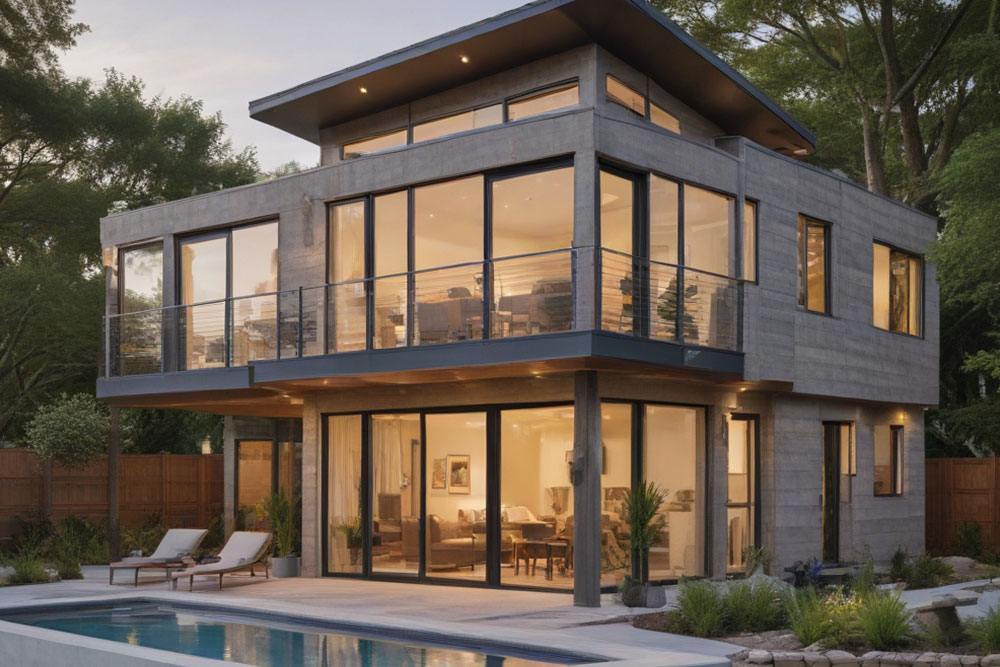Factors Affecting the Cost of Prefab Homes
Over the years, the demand for prefabricated properties has increased. Reports suggest that architects build 47% of their projects using some form of prefab structures. The reason prefab homes have become so popular across the country is that they provide several benefits, such as swift construction, cost-effectiveness, and reduced dependency on skilled labor. These modular houses also let contractors innovate with different layouts and significantly increase their durability and sustenance .

Prefab homes
Also called modular homes, prefab homes are houses manufactured partially or entirely in one place and transported to another for assembly. The factory that manufactures the property handles all the processes, including designing, fabrication, and finishing. Since all these are completed at the factory, contractors deploy more workers here and fewer at the assembly site.
Unlike traditional projects, which involve transporting plywood and other building materials to the construction site, prefab contractors buy materials in bulk and build the homes in a central warehouse. Once ready, the homes are sent to the location and assembled in a few days or weeks. Prefab homes built using this method are completed faster, making them popular among those who need a place to stay urgently.
Cost of prefab homes and the factors affecting it
The price of such a property depends on different factors and can fluctuate with time. Still, it is usually more affordable than a traditional home. While prices can start as low as €150,000 for a basic model, those opting for a high-end prefab house may have to shell out €400,000 or more, depending on the customization and size. But even for a larger prefab property, the rates will be lower than traditional brick-and-mortar homes of the same size.
Since prefab houses are available in different price ranges, they attract many buyers who can choose according to their budget. After purchasing a unit, one can also rent it out to others. Prefab homeowners in major cities charge higher rent. The exact amount can vary depending on the construction and installation quality, size, and amenities, among several other factors.
Size and layout
This is perhaps the most important factor defining the cost. Tiny homes under 50 square meters with minimalistic designs will cost less than prefab bungalows or eco-homes built for sustainability and energy efficiency.
Customization
Prefab house prices also vary greatly based on one’s chosen customization option. For example, in 2024, a 60-square-meter prefabricated bungalow for seniors with convenience and accessibility features like non-slippery flooring will cost more than a regular prefab home of the same size. Similarly, a modular home with high-end finishes and wooden prefab homes will be more expensive.
Shipping and assembly
Besides construction, contractors must incur other costs, such as shipping and assembly, that vary depending on the location. It’s also important to note that the assembly cost is calculated according to the number of days required for the task, and the money is usually paid in parts before starting and after finishing the project. For assembly, one usually pays the per day cost of an assembly expert or a single skilled worker, which can rise if the project is complicated.
Land and permits
Before assembling the prefab structure, contractors must purchase the land, inspect it, and get approvals. Preparing the site for the prefab house is also a major step, which involves clearing the land, leveling the ground, and installing foundations while following strict guidelines. Each task can influence the cost.
Contractors must also arrange for utilities like water, electricity, gas, sewage, and telecommunications, which can raise the price of the house. If these services aren’t available on-site, installation may be required, which can bump the prices by approximately €6,000 to €35,000.
Design and preparation
The total cost of a prefab home depends on two major factors — manufacturing and design. During the design phase, customers work with the contractor to finalize the layout, finishing materials, and features that align with their budget and preferences. Manufacturers typically offer a range of customizations, upgrades, and add-ons, so one simply needs to choose what they want. That said, every extra feature adds to the base price, increasing the final cost.
Tips to buy a prefab house
While a prefab home offers several benefits, one should never buy in haste . One should take their time and complete several important steps to get the best value for their money.
- Visit the showroom and choose a design or house after comparing the options.
- Get the house contract and project plans from the manufacturer.
- Get the required permits from the local municipality.
- Make decided partial payments.
In addition to following these basic steps, buyers must read the terms and conditions and check whether any part of the construction is their responsibility, such as customs affairs, shipping to other cities, payment methods, and customs clearance.
Lifespan of a prefabricated house
These houses are durable and can last up to 50 years when well maintained, making them a long-term and cost-effective housing solution. That said, it is important to check the materials used and the quality of construction, as these play a major role in determining the life of a prefab house .